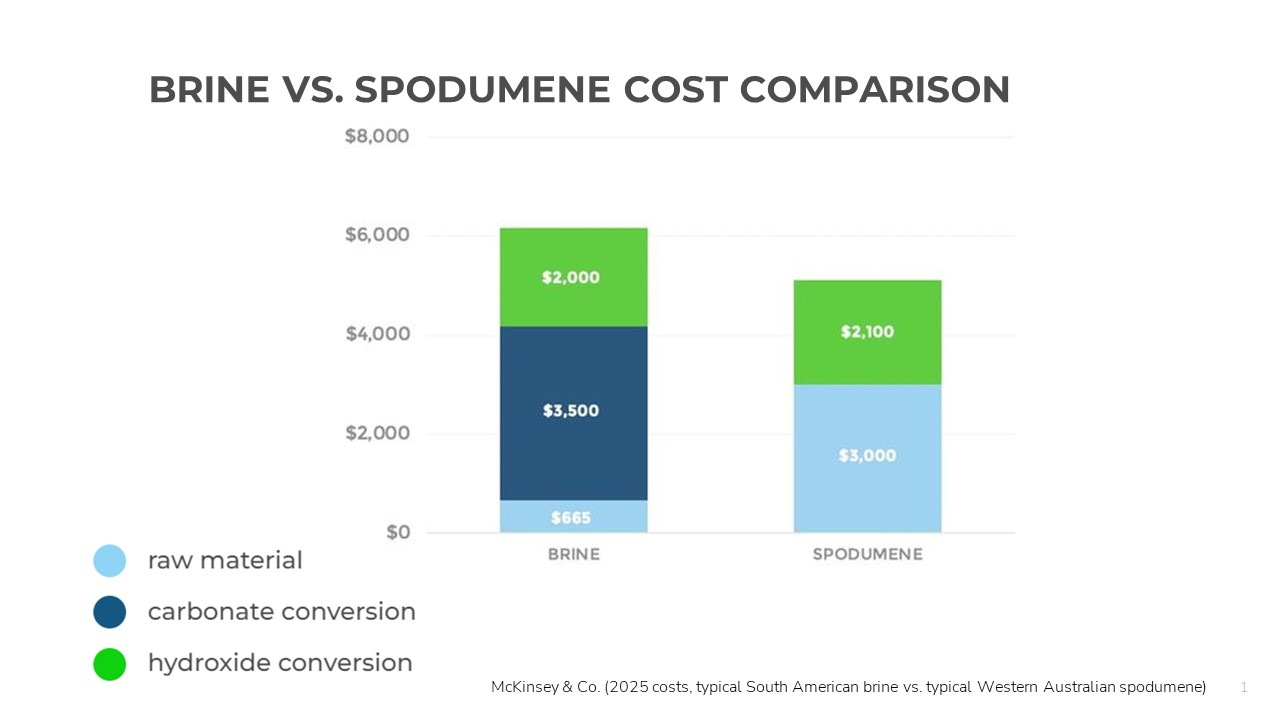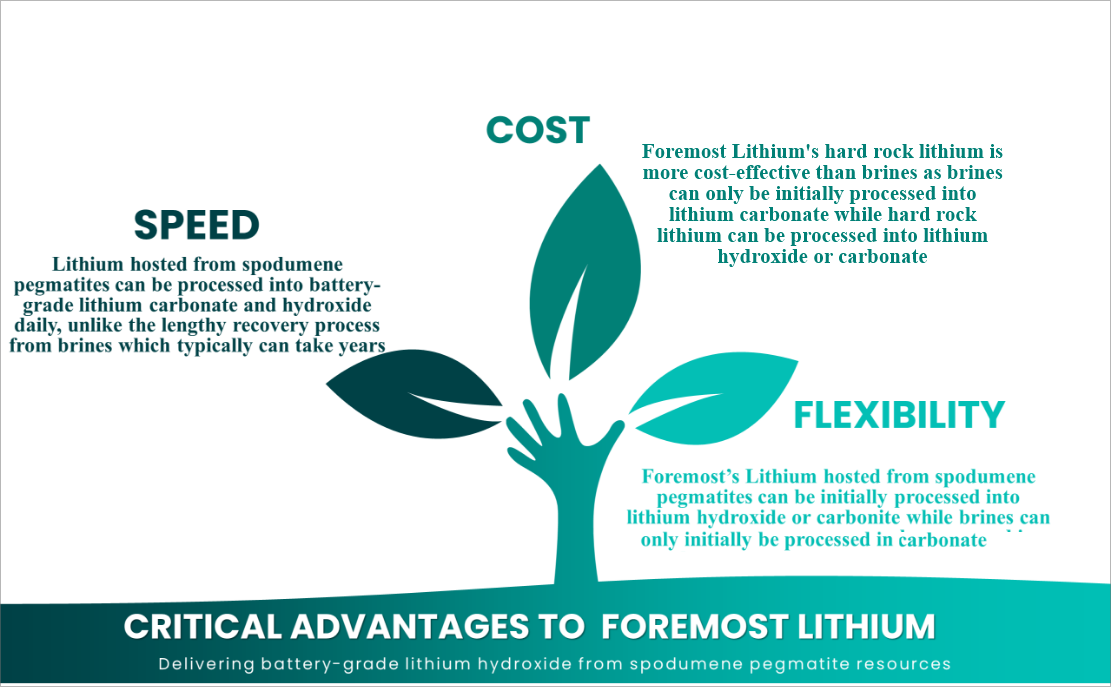About
A Tale of Two Lithiums
Lithium carbonate and lithium hydroxide are types of lithium used in batteries that come from a chemical extraction process from lithium deposits. But not all lithium is created equal. Lithium deposits can come from clay, mainly in minerals in called lepidolite, in brines which are found under dry lakebeds, or "salars," and hard-rock pegmatite deposits. Lithium generally produced from brines are more expensive to produce, so hard rock lithium which comes from lithium hosted from spodumene pegmatite dykes is becoming the more common source of lithium production because:
![]()
Cost
Unlike lithium sourced from brines which can initially only be processed into lithium carbonate, the Company’s lithium hosted in spodumene pegmatite sources can be cost-effectively processed directly into either lithium hydroxide or lithium carbonate.
![]()
Speed
Lithium production sourced from brine recovery is typically a very lengthy process that can take anywhere from several months to a few years to complete. Lithium hosted in spodumene pegmatite resources can be processed daily into several tons of battery-grade lithium carbonate and lithium hydroxide.
![]()
Flexibility
Foremost’s Lithium hosted from spodumene pegmatites can be initially processed into lithium hydroxide or carbonite, while brines can only initially be processed in carbonate.

Lithium is an essential part of lithium-ion batteries that are used in electric vehicles (EVs). In addition to expanding their offering of EV models, automotive OEMs are focused on improving total energy density and reducing weight in batteries to increase the driving range of EVs. To achieve these improvements, EV battery manufacturers are increasingly using high nickel content cathode materials that contain less cobalt and more nickel, while the lithium content remains largely unchanged. Due to the underlying chemistry, battery-grade lithium hydroxide is required in the manufacturing of high nickel content cathode material, whereas lithium carbonate, produced from lithium brine, is used in lower energy density EV battery applications.
Cost-effective and efficient lithium hydroxide derived from spodumene pegmatite dykes makes hard-rock lithium exploration and mining companies such as Foremost Lithium, an increasingly more favourable choice for producers and manufacturers of EV batteries.

